|
Meet the Dsonoqua— |
|||
|
By the early 1970s, less than 15 years after the advent of “BIGFOOT” at Bluff Creek, California, Bigfooters were in desperate need to find proof to justify the continued pursuit of something that so far had no real undisputed evidence. They reached out to Indian artwork to find their Yeti Gigantopithecus. What they uncovered was and is powerfully provocative. There are the ritual or dance masks of the bukwas or the “wild man of the woods,” which we examined in the page before this one. These were presented as reflective of Gigantopithecus when, in fact, they reflect the Indian histories of two tribes of “wild men.” Two types of bukwas masks exist. One is clearly ape-like with snarling grimace, baring teeth; the other is that strange disheveled “caveman” looking human— again an echo of the Salish and their histories of “two tribes.” But most importantly, Bigfooters uncovered the masks of the Dsonoqua. It is the most common type of dance or ritual mask found in the Pacific Northwest. The creature that was or is Dsonoqua was clearly seen far more than the much rarer “wild man of the woods.” This is not surprising since the Dsonoqua, right, is always pictured with a puckering mouth as if whistling. He is also represented with a thick brow ridge which encircles the entire eye socket. From our vantage point today, Dsonoqua is and is not Bigfoot. But he is one certain thing: he is our key to unraveling the origins of the true Bigfoot and Sasquatch. Meet the Dsonoqua and greet the controversy. It’s a controversy I created. It is not going away. It is in print in my influential and controversial (and highly unpopular) Recasting Bigfoot. It can never go away– for it is also embedded forever in Indian artwork. Bigfoot, as we White Man have created him, is a patchwork of many entities. He is not a single species, and most of the evidence proffered today to support Bigfoot has nothing whatsoever to do with the cone-headed legend of the Yeti. Dsonoqua are always represented as whistling. Also, tribal masks show a heavy ridge encircles the eyes, plunging the eyes into a deep socket. In some instances there is such detail in the ritual though symbolic mask that the nose is given features which a primatologist would recognize as Platyrrhinnian— that is to say, a nose where the nostrils are splayed and divided by a thick wall of cartilage. It is a feature only of New World primates; in other words, monkeys from South America. This is a strange feature to show on a purely “symbolic” mask.
A South American Spider Monkey, showing the features of a heavy brow ridge encircling the entire eye and the Platyrrhinni nose-- two nostrils forked apart by a depression of cartilage between them. Zoologists have always been struck by the fact that Indian artwork reveals the people of the Pacific Northwest had a knowledge of ape physiology. Bigfooters quickly used this to declare that it proves Yeti Gigantopithecus crossed over the Bering Land Bridge with so many other species that are known to inhabit both Eurasia and North America. But the artwork shows Dsonoqua, and all the evidence says Dsonoqua is native American. There is not only more evidence for Dsonoqua being a native American anthropoid there is, in truth, more evidence for Dsonoqua than any other crypto-primate. In fact, there was once a body. In 1920 in South America one was shot, killed and photographed by Swiss geologist Francois de Loys. He and 20 bravos had gone into the Venezuelan jungles looking for positive geologic signs of oil deposits. After 3 years in the “green hell” only he and 4 of his men returned. Much had been lost, and de Loys had been able to save only one picture of the many he had taken. This was a photo of a strange bipedal ape they had encountered by the Rio Tarra. It took some 9 years for the account and photo to finally gain sufficient acceptance and credibility to be published. It surprised zoology. De Loys had shot what appeared to be an ape “version” of a known species of small spider monkey. The photograph showed he had put the corpse on a fuel crate. The dimensions of the crate could be estimated. From these estimates, the anthropoid could be determined to be about 5 feet tall. It wasn’t anything like a spider monkey except in general arrangement of that species distinctive features. An actual spider monkey is only 3 feet at best, a quadruped with a long prehensile tail. The de Loys photo showed a heavily developed “ape.” Moreover, de Loys’ description of their encounter with these creatures was hardly the description of being attacked by small monkeys. He described his band of men coming across two such creatures, male and female. They had no tail, they walked erect, and they grabbed branches and beat the bushes, furious at de Loys and his men encroaching into their territory. Then, just like spider monkeys, they defecated in their hands and flung their . . . stuff. . . at de Loys. That was enough. When the male stepped aside, the female advanced and with one shot de Loys dropped her. The male, wounded, ran off into the jungle and probably died. Professor Georges Montandon was truly the one who caused the controversy in 1929 when the article and photos were published. He was a preeminent French zoologist. He believed de Loys and he believed the picture. He had examined it carefully for years and even went to the trouble of getting his cousin in the oil industry in South America to ship him an identical fuel crate as that used by de Loys in the picture so he could estimate height accurately.
One of Montandon’s comparisons-- two photos. On the left is de Loys photo of the creature that attacked them. On the right is a spider monkey set on the same type of crate. The great outcry not only came from Montandon accepting the account and verifying the dimensions in the photo, but from the fact that he introduced the subject of the photo as a new species, giving it the Latin name Ameranthropoides loysi – “Mr. Loys Ape Like American.” A new species was unofficially born, an ape-like but not ape American that should not have existed. Apes were only known to live in the Old World, and none of them looked like a developed “version” of a known species of monkey. Evolutionary theory at the time also believed that for an ape to be bipedal it was a missing link, thus closer to modern man than any other primate. How could a South American primate with no relation to mankind be the most advanced primate other than man? How could de Loys’ photo be right? Another Montandon comparison. Two photos again-- a spider monkey on the same crate, left, and his assistant on the same crate in the right photo. Ameranthropoides Loysi was obviously quite a big “ape.” In response to the massive amount of criticism Montandon looked back in history to uncover more corroborating evidence. Such ape-like creatures were often reported at one time in South America. They always traveled in a male-female pair, were about 5 feet tall, walked on their hind legs and were known for their loud whistling. (See Recasting Bigfoot) Under the barrage of protests and accusations of hoax, the loysi finally faded away. Montandon and de Loys’ reputations were assailed– de Loys was called a hoaxer and Montandon a fool for believing it. Yet thousands of miles away in the Pacific Northwest there existed much more corroborating evidence that the loysi existed. But no one suspected it would be found in the Indian artwork so far from South America. Equally, when the concept of an unknown and unusual anthropoid walking around the Pacific Northwest was reborn in 1958, no one bothered to consider a native American origin for Bigfoot. Sasquatch or Bigfoot was said to be bipedal, and by the theories of the time, once again, that made it a missing link. Thus, if real, it had to be from the Old World. As a result, though Sasquatch or Bigfoot had never been seen clearly they were portrayed as giant human troglodytes and/or eventually the cone-headed Himalayan Yeti. Again, the Yeti was the big thing in the 1950s. Yeti was Gigantopithecus, to hear some say it (including Harvard’s Carlton Coon). Gigantopithecus was thought to have been bipedal. This all seemed to fit. Bigfoot was Yeti and both were Sasquatch.
Yet no Indian artwork had ever showed the cone-headed giant Yeti. Principally they show Dsonoqua, and Dsonoqua reflects Ameranthropoides loysi. Loysi dwells in forests and jungles. Dsonoqua One of the most revealing Dsonoqua masks-- the brow ridge around the eye is complimented by a nose with a ridge imitating a platyrrhinni nose. Montandon discovered the Maya had statues of such ape-like creatures at Merida in Mexico. These statues show what looks like a male carrying a young creature. Dsonoqua, too, is often portrayed carrying his young. Like spider monkeys, the loysi showed the signs of exaggerated female reproductive organs, making the female look like a male. This is what is reflected in the Merida statues and can be seen in de Loys’ photo.
A blow up of the photo taken by de Loys. This is actually the female. The Koskimo Indians have a full body suit representing an entire Dsonoqua. Its body is hairy, with short legs and long arms with big hands. It looks an artistic representation of Ameranthropoides loysi. And it is just that. Traveling north in male-female pairs it is hardly surprising that new populations developed in North America. Within old west newspaper accounts there are reports of just such loysi. There is the report in 1869 from Crawford County, Kansas, in which M.S. Trimble describes such a creature terrorizing the community. In the Missouri Democrat he writes: “It has so near a resemblance to the human form that the men are unwilling Right, the Hami of the Koskimo Indians. Once again, the mask reveals the brow encircling the eyes. Two such creatures were seen in Crow Canyon, California, also in 1869, and described as a pair male and female. They were about 5 feet tall, and according to hunter de Groot: “Suddenly I was surprised by a shrill whistle, such as boys produced with two fingers under their tongues, and turning quickly, I ejaculated: ‘Good God!’ as I saw the object of my solicitude standing beside the fire and looking suspiciously around. It was the image of a man, but could not have been human. . . .As I looked he threw his head back and whistled again, and then stopped and grabbed a stick from the fire. This he swung round, until the fire at the end had gone out, when he repeated the maneuver. I was dumb, almost, and could only look. Fifteen minutes I sat and watched him as he whistled and scattered my fire about.”
All these accounts and more have found their way into the dossier of Bigfoot, despite the fact none of them match the cone headed giant Yeti. They match what de Loys shot in 1920 and they match Indian artwork of the whistling Dsonoqua. Carved stone heads of the Columbia Valley have also been used to support the idea of Bigfoot. They show ape faces, but in a very clear This is Dsonoqua. They weren’t mountain dwellers. They dwelt in the deep forests. It is time to accept that Ameranthropoides loysi was and is real. In doing so, one must accept that they were not the dreaded Skoocoom of Mount St. Helens or one of the tribes of the Sasquatch. They were not giants. They were not humans. One of the rock heads from the Columbia Valley, Washington State. The controversy only begins here. Dsonoqua are so plentifully represented in Indian artwork because they were not so dreadful as the “giants” and strange people of the mountains of whom the Indians spoke when they said Skoocoom and Sasquatch. The wild man-- the Another Dsonoqua mask, this one showing the big ears as well. Unlike with the artwork representing the Dsonoqua, the bukwas cannot be reconciled with a suspected anthropoid species. We only know from artwork that they represent what looks like snarling “apes” and strange, different looking men, and sometimes a mixture of both. When the Klickitat said “beings of a different species” who were cannibals of Mount St. Helens, just what were they referring to? It wasn’t Dsonoqua. These dreaded, swift strong “race of beings of a different species” were the Skoocoom. Although no identifiable artwork exists, fortunately there are other reports, far more detailed, of a tall, hairy human-like anthropoid that give us some clues. We must set aside Dsonoqua and remove its artwork from the equation of Bigfoot. They are not the bukwas. They are not Bigfoot or Sasquatch. Something dwelt in the mountains that was terrifying. Let’s meet the Skoocoom.
|
|||
|
Q Files is not spontaneous extemporanea. |
||||||||||||
|
|
||||||||||||
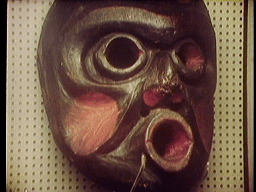 Indians said Dsonoqua was a forest dweller and not a mountain dweller like the frightening Sasquatch or Skoocum people. Only in the loosest sense were the Dsonoqua considered a people. Some Indians, like the Koskimo, regarded them merely as “dangerous things.”
Indians said Dsonoqua was a forest dweller and not a mountain dweller like the frightening Sasquatch or Skoocum people. Only in the loosest sense were the Dsonoqua considered a people. Some Indians, like the Koskimo, regarded them merely as “dangerous things.” 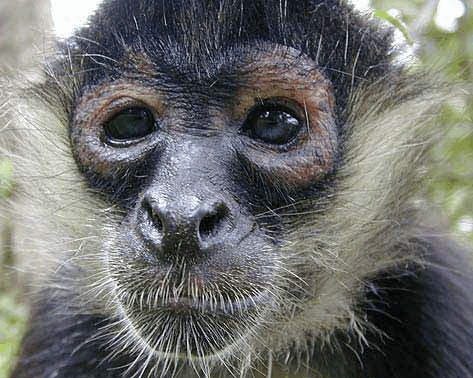
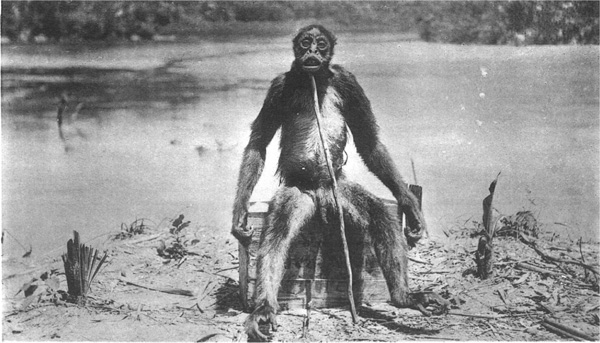
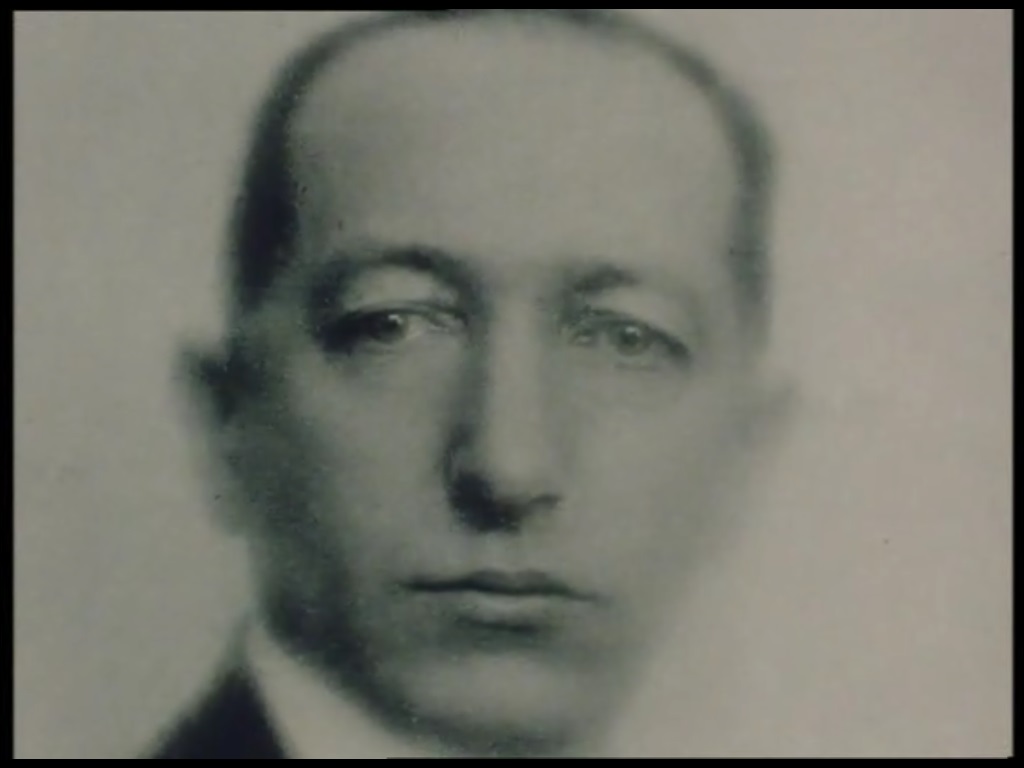
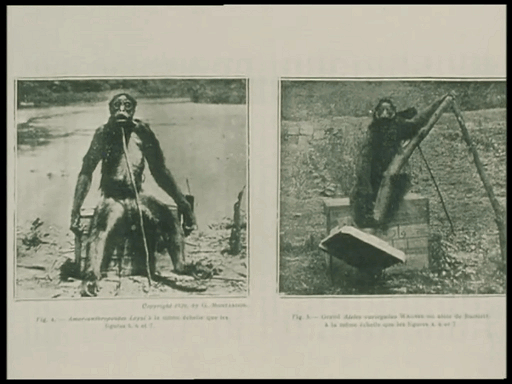
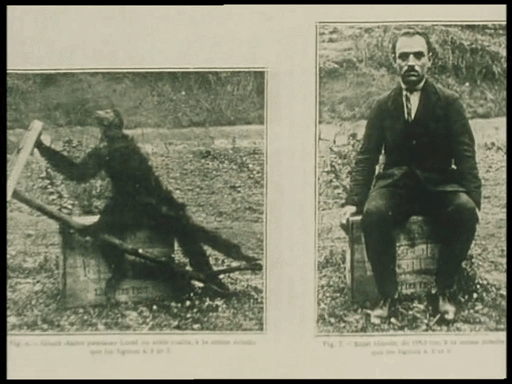
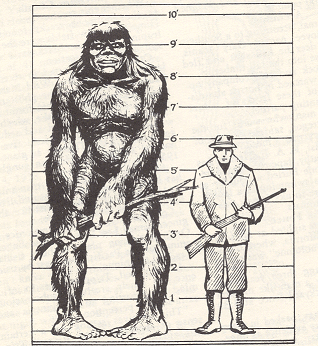
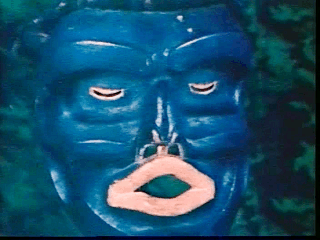 were a strange “nude people” or “dangerous thing” in the deep forests. Dsonoqua masks always showed him whistling with lips puckered. South American witness stories (even from the 19th century) had said these strange creatures traveled in a male-female pair and made loud whistles.
were a strange “nude people” or “dangerous thing” in the deep forests. Dsonoqua masks always showed him whistling with lips puckered. South American witness stories (even from the 19th century) had said these strange creatures traveled in a male-female pair and made loud whistles. 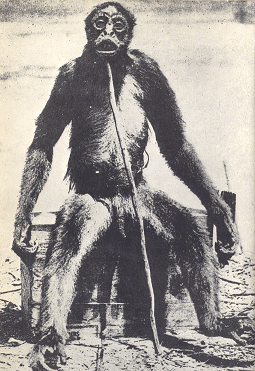
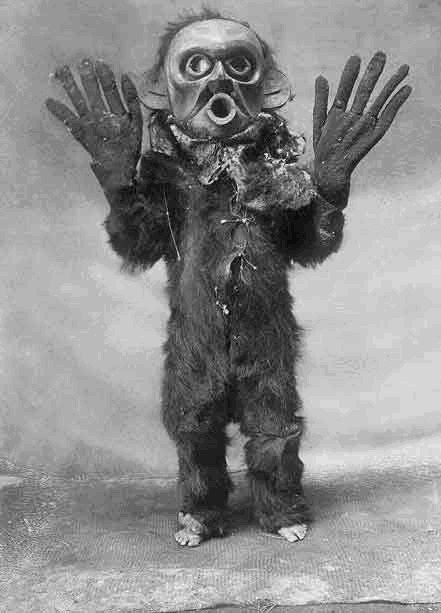 to shoot it. It is difficult to give a description of this wild man or animal. It has a stooping gait, very long arms with immense hands or claws; it has a hairy face and those who have been near it describe it as having a most ferocious expression of countenance; generally walks on its hind legs but sometimes on all fours. The beast or ‘what is it?’ is as cowardly as it is ugly and is next to impossible to get near enough to obtain a good view of it.”
to shoot it. It is difficult to give a description of this wild man or animal. It has a stooping gait, very long arms with immense hands or claws; it has a hairy face and those who have been near it describe it as having a most ferocious expression of countenance; generally walks on its hind legs but sometimes on all fours. The beast or ‘what is it?’ is as cowardly as it is ugly and is next to impossible to get near enough to obtain a good view of it.”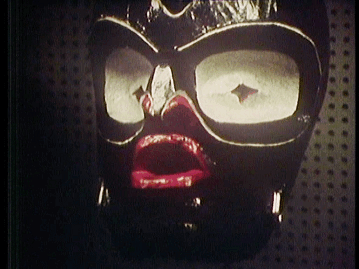 Another Dsonoqua mask stylistically showing the ridge around the eyes and the splayed platyrrhinni nose.
Another Dsonoqua mask stylistically showing the ridge around the eyes and the splayed platyrrhinni nose. 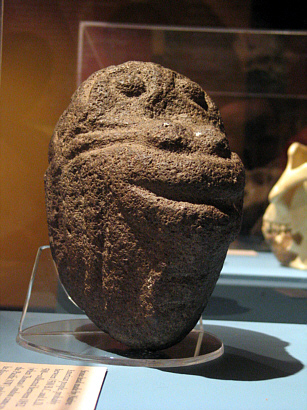 example they also show the feature of the spider monkey or Ameranthropoides loysi— the brow ridge entirely encircling the eye.
example they also show the feature of the spider monkey or Ameranthropoides loysi— the brow ridge entirely encircling the eye. bukwas-- is quite frankly hard to understand in Indian artwork. He is both ape and man— some shown snarling and baring teeth. Dsonoqua is always whistling, always a creature of the forest and not of the mountains.
bukwas-- is quite frankly hard to understand in Indian artwork. He is both ape and man— some shown snarling and baring teeth. Dsonoqua is always whistling, always a creature of the forest and not of the mountains.